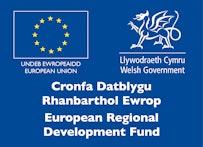Microstructural imaging

One of our key research foci is in microstructural imaging.
We utilise multiple imaging contrasts to quantify different aspects of white matter, including standard diffusion tensor MRI (DT-MRI), advanced models of diffusion (eg CHARMED), multi-component relaxometry, quantitative magnetisation transfer and quantitative susceptibility mapping.
In addition to the boost in signals from the microstructure and 7T human scanners, we have a strategic partnership with the University’s Experimental MRI Centre, with a 9.4T horizontal bore system that allows us to validate microstructural measurements.

What we're working on
Some of the issues we're trying to resolve include:
Making microstructural measurements robust
There are multiple confounds in the pipeline from acquisition through to interpretation of quantitative images that have been overlooked in the past. We strive to reduce as many sources of variance and bias as possible.
Our work includes optimisation of acquisition protocols, pre-processing, robust parameter extraction (orientation distribution functions and scalar indices), and robust analysis pipelines at the voxel, tract and network-based levels.
Best way to characterise white matter
Acquiring multiple contrast images takes time, and there are interdependencies in the measurements. Our work aims to identify the most efficient way of capturing the most salient features of white matter microstructure.
Individual differences in tissue microstructure
We're trying to determine how individual differences in behaviour, cognition and electrophysiology relate to individual differences in tissue microstructure
We have numerous projects combining microstructural measurements with cognitive testing data and magnetoencephalography (MEG) data.
Understanding disease processes
We apply the gamut of microstructural measurements in a wide range of developmental, neurological and psychiatric disorders, including those at familial/genetic risk of disorders.
We house one of the most powerful MRI scanners in Europe, as well as brain-stimulation equipment, sleep laboratories and drug-trial facilities.


